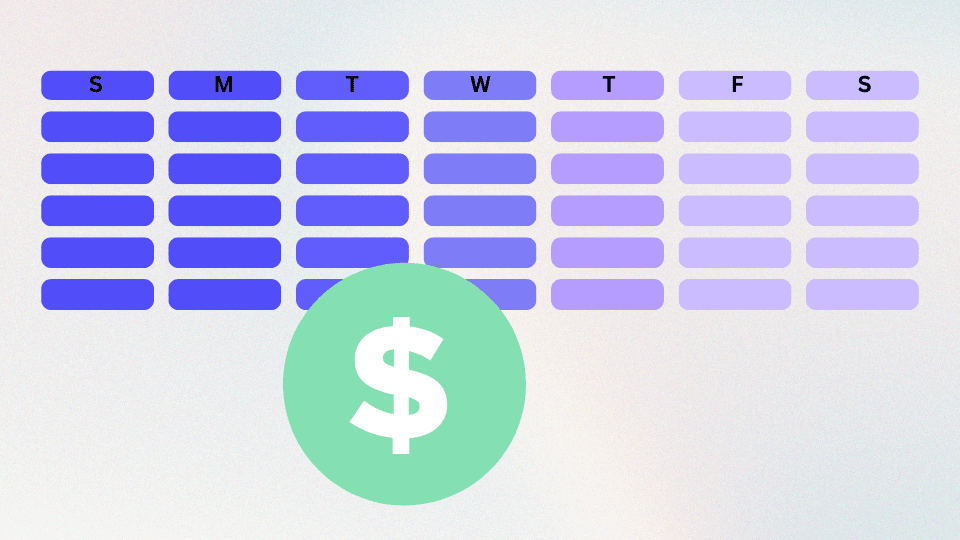As a freelancer, have you ever wondered if you are setting the right price for your services? Are you unsure of which pricing strategy will help you maximize your earnings while maintaining client satisfaction? Look no further! In this article, I will unveil the secrets of successful freelance pricing strategies and guide you through the intricacies of freelance rate negotiation.
Freelancers, like us, have the freedom to choose from a variety of billing strategies that suit the specific needs of our clients and projects. But which one is truly effective?

Are hourly rates the way to go, or should you explore fixed-fee projects or even value-based pricing? Let’s delve into the pros and cons of each strategy and discover which approach will help you set fair rates and propel your freelancing career to new heights.
What are some effective freelance pricing strategies?
There are six common pricing strategies used by freelancers: hourly rates, daily rates, weekly rates, monthly retainers, fixed-fee projects, and value-based projects.
| Strategy | Best for |
|---|---|
| Hourly-Rates | Beginners ✅ |
| Daily-Rates | Medium-Advanced ✅ ✅ |
| Weekly-Rates | Medium-Advanced ✅ ✅ |
| Monthly Retainers | Advanced ✅ ✅ ✅ |
| Fixed-Fee | Beginners ✅ |
| Value-Based | Advanced ✅ ✅ ✅ |
Pricing strategies for freelancers play a crucial role in determining their success and sustaining their business. One of the most common strategies is the use of hourly rates, where freelancers charge clients based on the amount of time they spend on a project. This method allows for greater flexibility and ensures that freelancers are compensated for the hours invested.
Another effective approach is the use of daily or weekly rates, especially for longer-term projects. This strategy provides stability and a guaranteed income for freelancers, and it simplifies the negotiation process with clients.
Additionally, monthly retainers can be an attractive option for both parties, as clients can secure ongoing services while freelancers benefit from a stable and predictable income.
Furthermore, fixed-fee projects enable freelancers to provide clients with a clear cost estimate for completing a specific task or project. This promotes transparency and instills confidence in clients, as they know exactly what they will be paying for.
On the other hand, value-based pricing strategies focus on the results and value that freelancers deliver to clients. In this approach, pricing is based on the impact of the services provided rather than the hours spent, resulting in fair compensation for both parties.
Finding the right pricing strategy for freelance services is essential for freelancers to thrive in their careers. Pricing strategies such as hourly rates, daily rates, weekly rates, monthly retainers, fixed-fee projects, and value-based projects each have their own advantages and can be tailored to suit different freelance situations.
By understanding these strategies and engaging in effective rate negotiation, freelancers can maximize their earnings while providing excellent services to their clients.
Hourly Rate

Hourly rate is a commonly used billing strategy among freelancers worldwide. It involves charging the client a set amount for each hour of work completed. The flexibility and simplicity of hourly pricing make it a popular choice for freelancers just starting out or working on loosely defined projects.
Pros of Hourly Rates:
- Client familiarity: Hourly rates are a standard billing method that many clients are familiar with, making it easier to negotiate and explain.
- Flexibility: Hourly rates work well for projects that are difficult to scope accurately, allowing room for adjustments based on the actual hours worked.
- Competition: As a freelancer early in your career, offering an hourly rate can make you more competitive against higher-priced freelancers.
Cons of Hourly Rates:
- Limited earning potential: Hourly rates may limit your earning potential compared to other pricing strategies, as the client only pays for the hours worked.
- Incentive to work slower: There is a risk of working slower to increase the total billable hours, which may compromise efficiency and productivity.
- Tracking hours: Accurately tracking hours worked can be tedious and time-consuming.
- Scheduling problems: If a project takes longer or shorter than expected, it can create issues with the client regarding the final payment.
Example of an Hourly Rate Scenario:
| Project | Estimated Duration | Hourly Rate | Total Payment* |
|---|---|---|---|
| Website Design | 4 weeks | $100 | $12,000 |
*Example: Total Payment may vary based on the 30 hours worked per week.
Fixed-Fee Projects

Fixed-fee projects offer freelancers a streamlined approach to pricing their services. With this strategy, a specific price is set for a defined scope of work, typically based on the estimated time needed to complete the project. By eliminating time-based billing, fixed-fee pricing provides clients with the certainty that the project cost will remain unchanged throughout its duration.
Pros of Fixed-Fee projects:
- Clarity in defining project scope upfront.
- Protection against scope creep, ensuring fair payment for agreed-upon work.
- Opportunity for higher earnings if completed efficiently, particularly for experienced freelancers.
Cons of Fixed-Fee Projects:
- Risk of underestimating work, leading to lower-than-expected earnings.
- Difficulty in renegotiating fixed fee for significant changes in project scope, potentially resulting in disputes over additional compensation.
An example of a fixed-fee project could be a website design and coding project estimated to take 12 weeks. The freelancer agrees to a fixed fee of $2,500 per half week, resulting in a total fixed fee of $30,000. However, if the project extends beyond 12 weeks or requires additional work due to unforeseen complexities, the freelancer and client may need to discuss adjusting the price to ensure fair compensation.
Value-Based Projects

Value-Based Pricing is a strategic approach that connects the fee charged with the value the freelancer’s work brings to the client’s business. This pricing strategy is particularly effective for services that can have a significant impact on a client’s revenue or solve critical problems. By aligning the price with the perceived value, freelancers can maximize their earning potential while providing customized pricing based on each client’s unique situation.
Pros of Value-Based Projects:
- Potential for higher earnings by tapping into the value provided to the client.
- Ability to capture a fair share of the value generated for the client’s business.
- Higher client satisfaction as pricing reflects the direct impact of the freelancer’s work on the client’s success.
Cons of Value-Based Projects:
- Complexity in determining a fair value for services provided, which can be subjective.
- Risk of miscalculating client perception, leading to pricing discrepancies.
- Requirement for freelancers to have a deep understanding of the client’s business and the specific value their services bring to accurately assess impact and set pricing structures.
Daily Rates

Setting daily rates is a significant aspect of freelancing. Freelancers must navigate the balance between pricing fair for their services and ensuring they are adequately compensated for their time and expertise. Pricing strategies for freelancers can vary depending on factors such as industry, experience, and demand for their particular services.
Pros of daily rate projects:
- Fair Compensation: Daily rates allow freelancers to ensure they are adequately compensated for their time and expertise.
- Market Understanding: Setting daily rates involves researching and analyzing market rates, which helps freelancers determine an appropriate pricing range and negotiate effectively with clients.
- Flexibility: Freelancers can adjust their rates based on their level of experience and expertise, catering to different types of clients and projects.
- Steady Income: Implementing pricing strategies such as offering discounts for bulk projects or charging a premium for rush projects can help ensure a steady income flow.
- Experimentation: Freelancers can experiment with different pricing strategies to find what works best for their business and client base, leading to a successful and sustainable freelance career.
Cons of daily rate projects:
- Negotiation Challenges: Negotiating daily rates with clients can be challenging, requiring freelancers to effectively communicate their value and justify their pricing.
- Market Fluctuations: Market rates may fluctuate, requiring freelancers to regularly reassess and adjust their daily rates to remain competitive.
- Client Expectations: Setting daily rates too high may deter potential clients, while setting them too low may undervalue the freelancer’s services and expertise.
- Income Variability: While daily rates offer flexibility, income may vary depending on the volume and types of projects secured, leading to potential income fluctuations.
- Risk of Undercharging: Freelancers risk undercharging for their services if they fail to accurately assess their value and the market rates.
One important consideration when setting daily rates is understanding the market value of your skills and services. Conducting research and analyzing the rates of other freelancers in your field can help you determine an appropriate pricing range. This knowledge can also serve as a negotiation tool when discussing rates with clients. Freelance rate negotiation can be challenging, but having a clear understanding of your value and the market can empower you in these conversations.
Another factor to consider is your level of experience and expertise. As your skills develop and your reputation grows, it is reasonable to adjust your rates accordingly. Establishing different rates for different levels of expertise can help you cater to different types of clients and projects. It is essential to communicate your experience level and the value that it brings to the table when discussing rates with potential clients.
Finally, applying pricing strategies for freelance services can help ensure a steady income flow. Some freelancers may choose to offer a discounted rate for bulk or long-term projects, while others may charge a premium for rush projects or those requiring additional expertise. Experimenting with different pricing strategies can help you find what works best for your business and client base.
Pricing strategies for freelancers play a crucial role in determining income and attracting clients. By researching market rates, negotiating effectively, and considering experience and expertise, freelancers can establish fair and competitive daily rates. Flexibility and experimentation with different pricing strategies can ultimately lead to a successful and sustainable freelance career.
Weekly Rates

Freelancers often face the challenge of setting their rates. With no fixed salary, it becomes crucial to determine rates that reflect their expertise and the value they bring to the table. This is where weekly rates come into play.
Pros of weekly rate projects:
- Clear Pricing Structure: Weekly rates provide a straightforward and easy-to-understand pricing structure for both freelancers and clients, facilitating transparent transactions.
- Simplified Negotiation: Setting weekly rates simplifies the negotiation process by eliminating the need for detailed discussions about hourly or project-based rates. This clarity reduces misunderstandings and streamlines negotiations.
- Value Demonstration: Weekly rates allow freelancers to showcase the value they can provide on a consistent basis, emphasizing their skills, qualifications, and the benefits of hiring them over a longer term.
- Professional Reputation: Establishing weekly rates enhances a freelancer’s professional reputation by presenting them as organized and confident in their pricing, potentially attracting more clients and higher-quality projects.
- Fair Compensation: Weekly rates help ensure fair compensation for freelancers by allowing them to charge based on the amount of work expected in a week, reflecting their expertise and the value they bring to the table.
Cons of weekly rate projects:
- Limited Flexibility: Weekly rates may limit flexibility for freelancers who prefer to work on shorter or longer-term projects, as clients may be more inclined to hire based on weekly commitments rather than other arrangements.
- Potential for Underestimation: There’s a risk that freelancers may underestimate the amount of work involved in a week, leading to undercharging for their services if their rates are not accurately aligned with the workload.
- Client Budget Constraints: Some clients may have budget constraints that make weekly rates less appealing, especially if they prefer to pay based on specific project milestones or outcomes rather than weekly commitments.
- Market Perceptions: Depending on the industry or client preferences, weekly rates may be perceived differently, potentially influencing the attractiveness of a freelancer’s pricing strategy to certain clients or sectors.
Weekly rates are an effective tool for pricing strategies for freelancers. They provide a clear, easy-to-understand pricing structure for both parties involved. Freelancers can set their rates based on the amount of work expected in a week, while clients can easily compare rates and make informed decisions.
Freelance rate negotiation becomes more straightforward with weekly rates. Instead of trying to negotiate an hourly or project-based rate, freelancers can present a weekly rate that encompasses their expected workload and deliverables. This approach eliminates the need for detailed negotiations and leaves little room for misunderstandings.
Furthermore, pricing strategies for freelance services can benefit greatly from weekly rates. Freelancers can showcase their value by not only highlighting their skills and qualifications but also by presenting the value they can provide on a weekly basis. This allows clients to see the tangible benefits of hiring a freelancer and encourages them to invest in their services.
Establishing weekly rates is an effective pricing strategy for freelancers. It simplifies rate negotiations, provides a clear pricing structure, and allows freelancers to demonstrate the value they can bring to clients. By incorporating weekly rates into their pricing strategies, freelancers can enhance their professional reputation and ensure fair compensation for their work.
Monthly Retainers

Monthly retainers have become an increasingly popular pricing strategy for freelancers. This model allows freelancers to secure a steady income by offering their services on a recurring basis to clients. It benefits both parties involved, as clients have peace of mind knowing they have a dedicated professional on their team, and freelancers have a consistent workload.
Pros of monthly retainer projects:
- Steady Income: Monthly retainers provide freelancers with a consistent and predictable income stream, offering financial stability and peace of mind.
- Client Assurance: Clients benefit from monthly retainers by having access to a dedicated professional on a recurring basis, ensuring consistent support and service for their needs.
- Flexibility: Offering different pricing tiers allows freelancers to cater to a diverse range of clients with varying needs and budgets, increasing their market reach and potential client base.
- Incentives for Commitment: Providing discounts for longer-term contracts incentivizes clients to commit to monthly retainers, fostering long-term relationships and stability for freelancers.
- Fair and Profitable Arrangements: Through effective negotiation and consideration of market rates, value provided, and client needs, freelancers can establish fair and profitable monthly retainers that benefit both parties.
Cons of monthly retainer projects:
- Complex Pricing Determination: Determining the right pricing strategy for monthly retainers can be challenging, requiring freelancers to carefully consider their expenses, value proposition, and market rates.
- Negotiation Complexity: Negotiating monthly retainer agreements may involve complex discussions about service levels, hours worked, and pricing tiers, requiring clear communication and negotiation skills.
- Risk of Overcommitment: Freelancers risk overcommitting themselves by offering too many monthly retainers, potentially leading to burnout or difficulty fulfilling obligations to all clients.
- Potential for Income Fluctuations: While monthly retainers provide steady income, freelancers may experience fluctuations if clients reduce or terminate their retainer agreements, requiring careful financial planning and diversification.
- Alignment with Business Goals: Freelancers must ensure that their pricing aligns with their business goals and expenses while still providing value to clients, balancing profitability with client satisfaction.
Determining the right pricing strategy for monthly retainers can be a bit tricky. Freelancers must consider their own expenses, the value they bring to clients, and the market rates for their services. Freelance rate negotiation is essential in finding a fair and profitable arrangement for both parties.
One effective strategy is to offer different pricing tiers based on the level of service or the number of hours worked per month. This allows freelancers to cater to a variety of clients with different needs and budgets. Additionally, offering discounts for longer-term contracts can incentivize clients to commit to a monthly retainer, ensuring stability for the freelancer.
Monthly retainers are a valuable pricing strategy for freelancers looking to establish a steady income stream. By implementing pricing strategies that consider market rates, value provided, and the needs of clients, freelancers can negotiate fair retainers that benefit both parties. It’s important for freelancers to evaluate their expenses and make sure their pricing aligns with their business goals while still providing value to clients.




